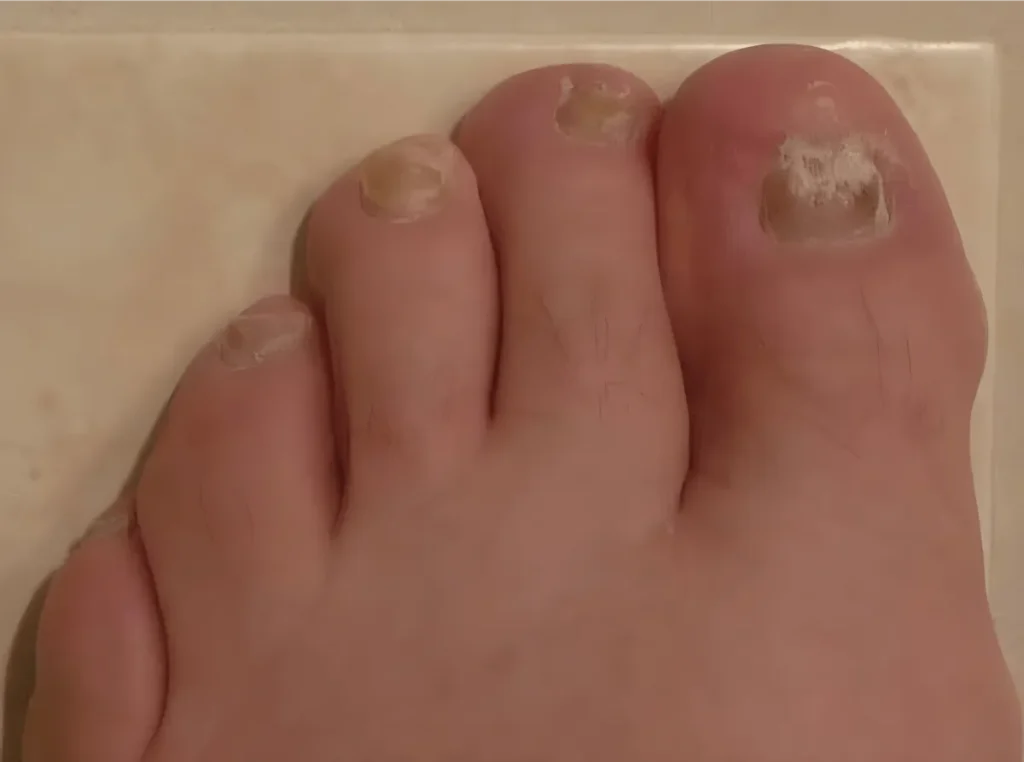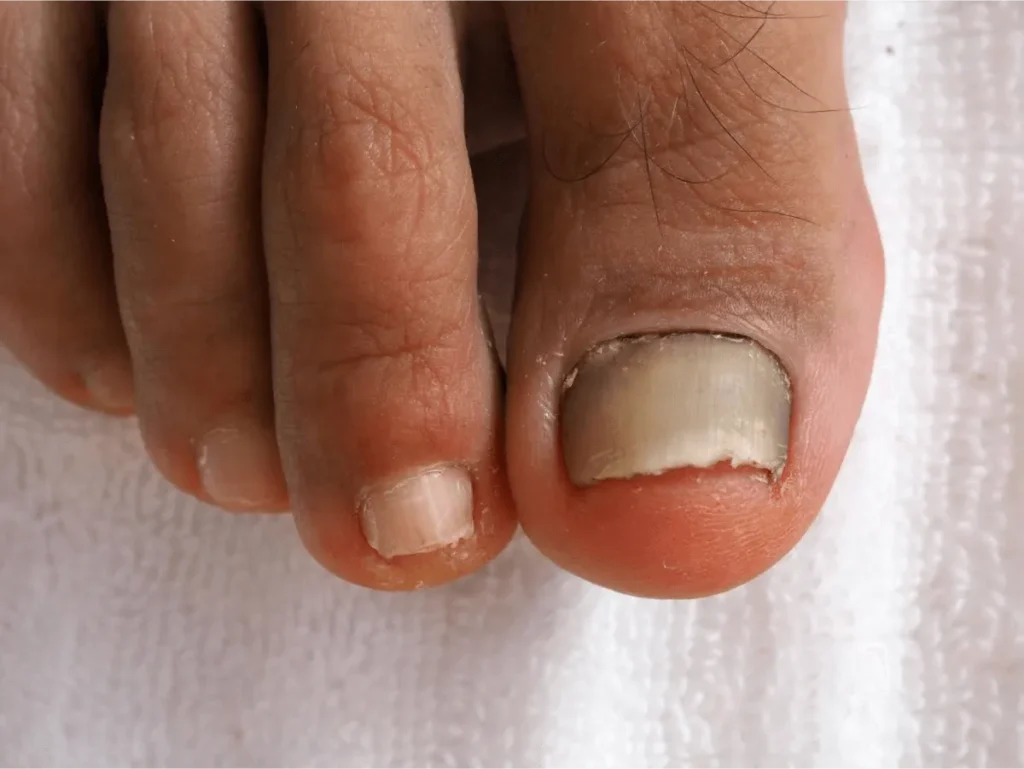Dealing with toenail fungus can be a real pain in the foot. Get it? You might have noticed your nails turning yellow, thick, or brittle, and wondered if there’s a way to get rid of this infection. A podiatrist can be your go-to for treating toenail fungus, also known as onychomycosis. These foot doctors have a bunch of methods to help you get rid of foot fungus, and restore your nails to the way they’re supposed to be.
The Role of a Podiatrist in Treating Toenail Fungus
When you’re dealing with toenail fungus, a podiatrist is the doctor you should look for. Podiatrists have the knowledge and tools to tackle this infection. Let’s look at how they can help you get rid of it.
Specialized Expertise
Podiatrists are trained to spot toenail fungus early. They can tell the difference between a fungal infection and other nail problems. This matters because treating the wrong issue won’t solve your problem. Your podiatrist will examine your nails, maybe run some tests, and figure out what’s really going on. They know that toenail fungus can also affect your overall foot health and even how you walk.
Approach To Treatment
A podiatrist is your best resource for treating stubborn toenail fungus. They might prescribe oral medications like terbinafine or itraconazole. These pills work from the inside out to kill the fungus. For some cases, they’ll recommend topical treatments you apply directly to your nails. Some podiatrists even use solutions like UV laser therapy. This method targets the fungus without harming your healthy nail tissue. If your infection is bad, they might suggest removing part or all of the infected nail. This gives a healthy nail a chance to grow back.

Personalized Care Plans
Every case of toenail fungus is different, and treatment should be too. Podiatrists create care plans that fit your needs. They look at things like how bad your infection is, your overall health, and your lifestyle. If you have diabetes or circulation problems, for example, your podiatrist will take extra care in planning your treatment. They’ll also teach you how to take care of your feet to prevent future infections. This might include tips on proper nail care, choosing the right shoes, and keeping your feet dry.
Remember, trying to treat toenail fungus on your own can lead to more problems. A podiatrist has the skills and tools to handle the infection effectively. They’ll work with you to find the best treatment and help you keep your feet healthy in the long run.
Non-Invasive Treatment Methods
When it comes to treating toenail fungus, you have several non-invasive options. These methods try to clear the infection without surgery or removing the nail.
Prescription Medications
our podiatrist can prescribe oral antifungal medications. These pills work from the inside out to kill the fungus. The Food and Drug Administration has approved drugs like terbinafine (Lamisil) and itraconazole (Sporanox) for this purpose. These medications offer a shorter treatment time and are often more effective than other options. However, they’re not for everyone. If you have liver disease or heart problems, your doctor might suggest a different approach. Also, these drugs can interact with other medications, so be sure to tell your podiatrist about any other pills you’re taking.
Topical Solutions
For milder cases, your podiatrist might prescribe a topical treatment. These are medications you apply directly to your nails. Options include ciclopirox (Penlac), efinaconazole (Jublia), and naftifine (Naftin). To use these, you’ll need to trim and file your nails first. This helps the medicine reach deeper into the infected area. Your doctor might also suggest soaking your feet before applying the medication. This can make the treatment more effective. Keep in mind that topical treatments can take longer to work than oral medications.

Microwave Immunotherapy
A newer treatment option your podiatrist might offer is microwave therapy. This method uses microwave energy to target the fungus. The treatment involves applying microwave energy to your nail for short periods. It’s usually done in the doctor’s office, so you don’t have to worry about remembering to apply medication at home.
Advanced Therapies for Stubborn Infections
When standard treatments don’t cut it, your podiatrist might suggest more advanced options to tackle your stubborn toenail fungus. These methods aim to clear the infection when other approaches have failed. Let’s look at some therapies that could help you get rid of fungal nails for good.

Laser Treatment Technology
Laser therapy has become a popular choice for treating tough toenail fungus cases. This method uses light energy to target and kill the fungus without harming your nail or surrounding skin. It works by sending a UV light beam through your toenail to zap the fungus hiding underneath. You might need one to four treatments depending on how bad your infection is, but there’s no downtime, so you can walk right out of the office after your appointment.
Surgical Options
If your infection is severe or keeps coming back, your podiatrist might recommend surgery. This isn’t a common first choice, but it can be effective when other treatments haven’t worked. During the procedure, your doctor numbs the area and removes all or part of your infected nail. In some cases, they might also destroy the nail matrix to prevent the nail from growing back. This procedure is usually done in the doctor’s office and takes less than an hour.
Combination Therapies
Sometimes, the best approach is to use multiple treatments together. Your podiatrist might suggest combining laser therapy with topical or oral medications. This one-two technique can increase your chances of getting rid of the fungus for good. Another option is to use laser treatment to create tiny holes in your nail, making it easier for topical medications to reach the fungus. Your doctor will create a treatment plan tailored to your case, considering factors like the severity of your infection and your overall health.

Do You Need Professional Help?
Toenail fungus can be a problem that’s hard to get rid of, but a podiatrist has many tools to help. They can prescribe oral medications, apply topical solutions, or use advanced therapies like laser treatment. Your foot doctor will create a plan that fits your needs, taking into account the severity of your infection and your overall health.
Victoria Foot & Ankle is a leading podiatry clinic in Victoria, Texas, dedicated to providing care for foot and ankle conditions. Our experienced team of podiatrists offers personalized treatment plans to address a wide range of issues, from common foot pain to complex surgical needs. We are committed to improving our patients’ quality of life through compassionate care and advanced medical techniques. Whether you need routine foot care or specialized treatment, Victoria Foot & Ankle is here to help you stay on your feet. For more information, please visit Victoria Foot & Ankle.








